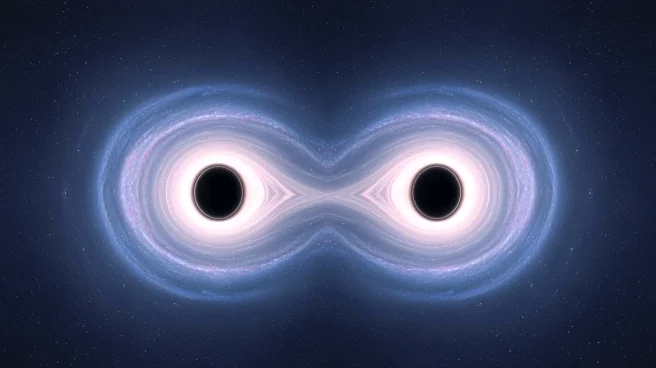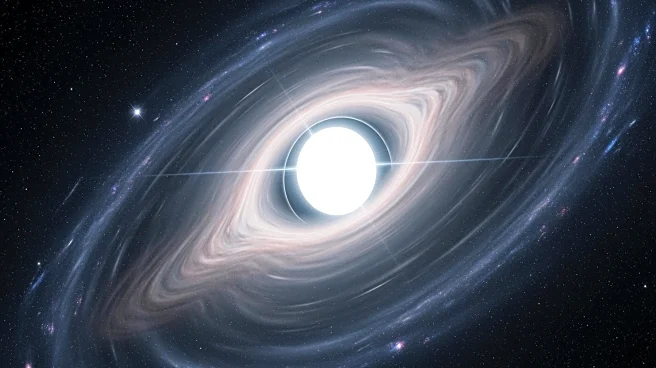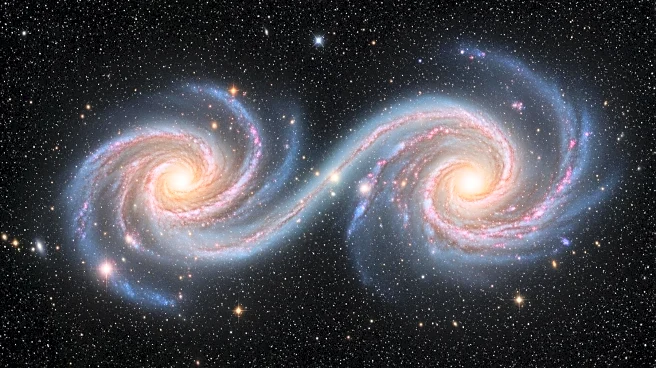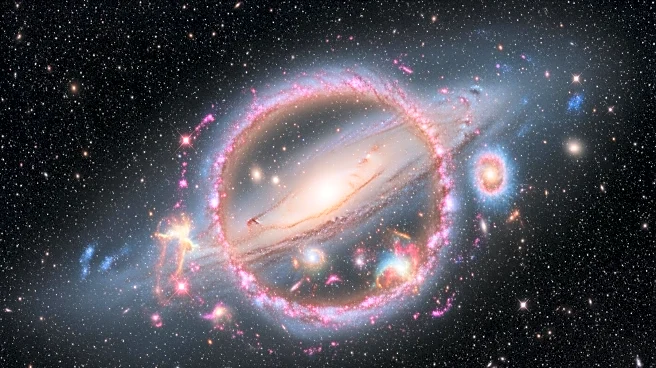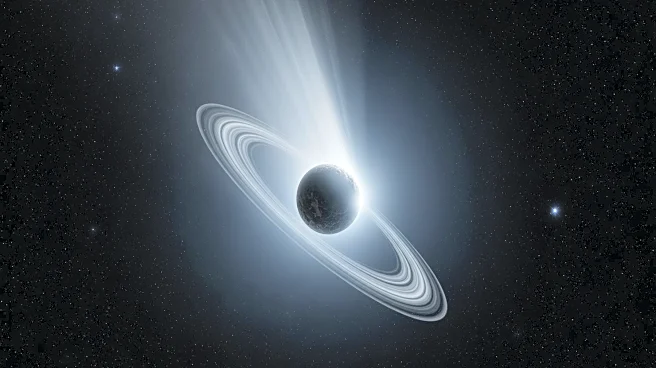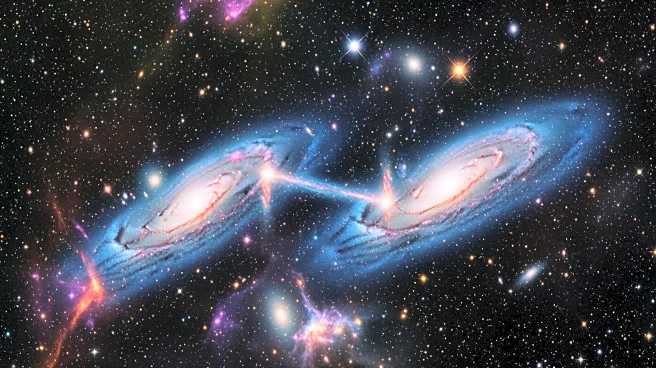What's Happening?
Astronomers have successfully observed two black holes orbiting each other in the quasar OJ287, located 4 billion light-years away in the constellation Cancer. This discovery was led by Mauri J. Valtonen
from the Tuorla Observatory and the University of Turku, Finland, along with an international team of researchers. The system consists of a primary black hole with 18.35 billion solar masses and a secondary black hole with 150 million solar masses. The secondary black hole impacts the primary's accretion disk twice during its 12-year orbit, emitting bright bursts of radiation. This observation confirms a theory proposed in 1982 by Finnish astronomer Aimo Sillanpää, who suggested that the quasar's brightness variations were due to two co-orbiting black holes.
Why It's Important?
This observation is significant as it resolves a 40-year-old mystery about the existence of co-orbiting black holes within quasars. The findings provide crucial insights into the behavior and characteristics of supermassive black holes (SMBHs) and their interactions. Understanding these interactions is vital for astrophysics, as SMBHs play a critical role in the evolution of galaxies. The discovery also demonstrates the capabilities of high-resolution imaging techniques, which are essential for studying distant cosmic phenomena. This advancement could lead to further discoveries about the nature of black holes and their impact on the universe.
What's Next?
Future observations are expected to focus on the newly identified jet emanating from the secondary black hole, which has a twisted, serpentine profile. Researchers anticipate that the jet will change direction as the secondary black hole's speed and orbit vary. These observations will help scientists understand the dynamics of black hole jets and their influence on surrounding space. Continued monitoring of OJ287 and similar systems could provide more data on the orbital motion of binary black holes, enhancing our understanding of these enigmatic cosmic entities.
Beyond the Headlines
The discovery of co-orbiting black holes in quasars like OJ287 could have broader implications for our understanding of galaxy formation and evolution. The interaction between black holes and their surrounding environments can influence star formation and the distribution of matter in galaxies. Additionally, the study of black hole jets may reveal new information about the mechanisms driving high-energy cosmic phenomena. This research underscores the importance of international collaboration and advanced technology in pushing the boundaries of astrophysical knowledge.
